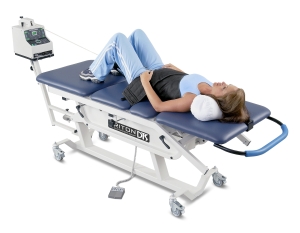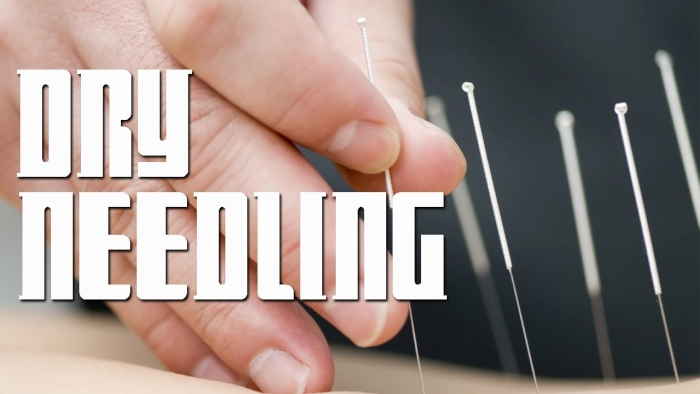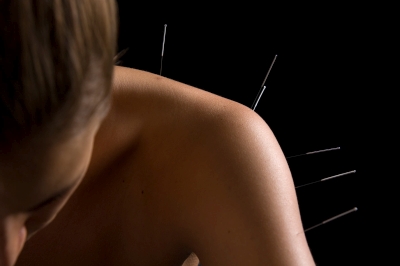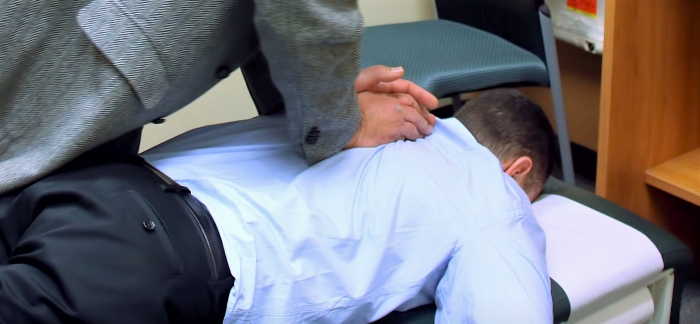Services We Offer:
- Spinal Manipulation
- Electrical Stimulation
- Traction Therapy
- Ultrasound
- And much more…
 What is Traction Therapy?
What is Traction Therapy?
Spinal traction therapy is a non-invasive treatment used to relieve chronic lower back pain, especially sciatica, and neck pain.
Lumbar traction can relieve pressure on compressed nerves, help muscles relax and reduce muscle spasms. Traction can increase the space between vertebrae – reducing pressure on intervertebral discs and nerve roots.
Cervical traction can relieve muscle spasm and nerve root compression by stretching soft tissues and increasing the spaces between cervical vertebrae.
Why should I consider Traction Therapy?
Traditionally, surgery, pain medications and manipulation have been the primary treatments employed by doctors to address most problems involving the spine.
The complications from back surgery can be severe and may result in permanent debilitating conditions. Surgery can be extremely expensive with recovery taking several months.
Pain medications can make it difficult for a person to carry on with normal day to day activities.
Thousands of back pain patients have been successfully treated with traction therapy!
PHYSICAL THERAPY
What is a physical therapy?
Physical Therapy is a skilled intervention delivered by a Licensed Doctor of Physical Therapy focused on restoring or maintaining functional level. Physical therapy can address pain, range of motion deficits, strength deficits, posture, and any leisure activities (hunting, fishing, running) you once enjoyed. Physical Therapist utilize techniques such as: manual therapy, neuromuscular reeducation, therapeutic activities, therapeutic exercise, electrical stimulation, traction, and ultrasound.
 What physical therapy is not?
What physical therapy is not?
Exercise. Exercise is delivered a gym, studio, or box by a (non)certified personal trainer, weight lifting coach, or strength coach.
Before your first appointment
Visit our New Patient Center.
What do you need to bring to your first visit?
- Positive Attitude
- Loose Fitting Clothing
- Insurance Card
- Any images (x-ray, MRI, CT scan) that you have recently (within 6 months) taken
Conditions Treated
- Chronic Pain
- Spinal dysfunction
- Low back pain
- Neck pain
- Sports Injuries
- Return to Sport
- Pre and post operative orthopedic care
- Total/partial joint replacement
- Ligament repair
- Tendon repair
- Overuse injury
- Muscular strains
- Ligament sprains
- Gait dysfunction
- Loss of balance
- Trendelenburg
- Dizziness and Vertigo
- Cardiac rehabilitation
- Chronic respiratory
Additional services offered
- Annual Wellness (fitness) exam
- Personal nutritional plans
- Kinesiotaping
- Sports strength and conditioning
- Power/Manual wheelchair evaluation
Dry Needling

Integrative Dry Needling
Integrative Dry Needling is a highly effective form of physical therapy for the treatment of a multitude of musculoskeletal and neuromuscular conditions. It is not appropriate for all conditions or pathologies and the use of the technique will be at the discretions of your physical therapist.
How does it work?
Integrative dry needling is not acupuncture (traditional Chinese medicine), it is based on neuroanatomy and modern scientific study of the musculoskeletal and neuromuscular systems. A very fine filament needle is inserted through the skin and into the deeper tissues that are considered trigger points to your pain. Dry needling works by causing a microlesion within the pathological tissue thus breaking up shortened tissues, inhibiting a reflex arc from the nervous system to the tissue, normalizing the inflammatory response, and centrally mediating the pain. This mechanical and neuromuscular effect provides an environment that enhances the body’s ability to heal which ultimately reduces pain.
 What Conditions can be treated?
What Conditions can be treated?
Conditions include, but are not limited to neck, back, and shoulder pain, arm pain (tennis elbow, carpal tunnel, golfer’s elbow), headache to include migraines and tension-type headache, jaw pain, buttock pain and leg pain (sciatica, hamstring stains, calf tightness/spasms)
Are the needles sterile?
Yes, we only use sterile disposable needles.
Is the procedure painful?
The fine filament needle is very thin, solid, and flexible, which allows for the needle to be pushed through the skin versus cutting the skin. This helps reduce any discomfort that may occur with the procedure. We strive to make the treatment virtually painless however at times a local twitch response of the muscle may be felt. When the needle is inserted into the pathological tissue that local twitch response sensation is normally and is felt only momentarily.. many patients describe this twitch response as a little electric shock, cramp, or an ache sensation. These sensations are perfectly normal and even a desirable response. Your PT will make every effort to make your experience comfortable and therapeutic.
How will I feel after the Dry Needling treatment?
This will vary but many patient experience immediate relief of their symptoms and an increase in range of motion. Soreness can also be a common response from the needling but does not occur with all people. Some individuals may experience an immediate achiness or a delayed soreness the next day. The soreness, if present, will usually last 1-2 days, use of heat and light massage and movement will be beneficial. Mild bruising may occur at the needling site and is more prevalent in certain parts of the body. Larger bruising may also occur but is rare. Application of ice on a bruise will help with the soreness and skin discoloration will last several days but is not harmful.
It is uncommon but possible that the treatment may temporarily increase your symptoms. This is not unusual but if this continues past the 1-2 day window, inform your PT to allow adjustment of your program to enhance your comfort next time. This does not mean that needling will not be beneficial to your condition.
Will I continue to do exercises or receive other treatments?
Yes, your personalized physical therapy program will still integrate traditional physical therapy methods including manual therapy, therapeutic exercise, endurance training, stabilization, and posture training.
How many treatments will I need?
This will depend on the category you fit in, which is determined by the state of the injury and your overall health. Remember we are attempting to cause mechanical and biochemical changes without any pharmacological means. Therefore, we are looking for a cumulative response to break the pain cycle. Your PT will able able to give you more insight into your evaluation.
What should I do to prepare for treatment?
- Do not eat 30 minutes before the treatment
- Be well hydrated by empty your bladder prior to treatment
- Wear lose fitting clothing, shorts, or bathing suit for easy access to your painful areas
What should/can I do after treatment, what should I avoid?
Our recommendations vary depending on the amount of soreness you have and on the individual response to treatment. Recommendations may include increasing your water intake, applying ice or hate over the area, gentle stretches and modifications of activities.
Is Dry Needling treatment covered by my insurance?
This is a Physical Therapy treatment and is NOT acupuncture therefore your coverage of Dry Needling should correspond with your Physical Therapy benefits. You can discuss this further with our administrative staff if you require more information.
Not all medical or physical therapy professionals are trained to perform the Integrative Dry Needling treatment technique. The physical therapists at YOUR CLINIC have advanced training and have been certified through the Integrative Dry Needling Institute.

